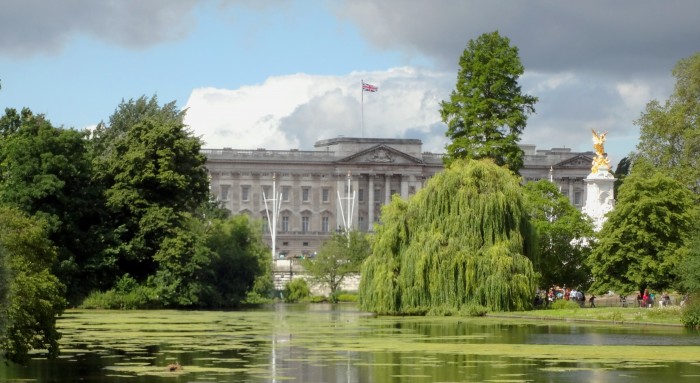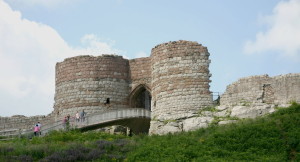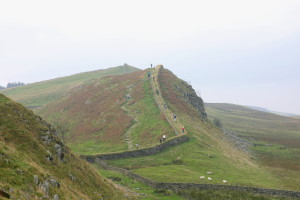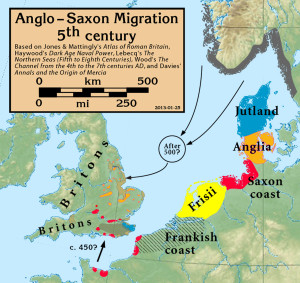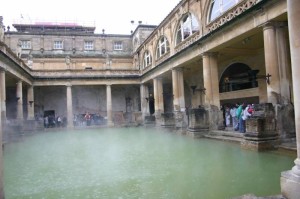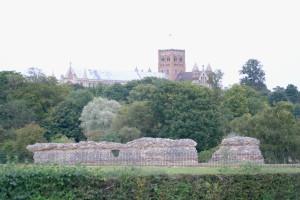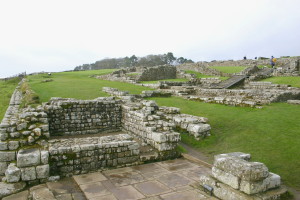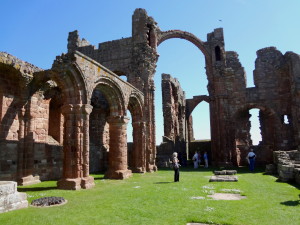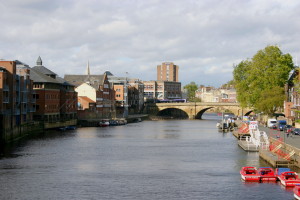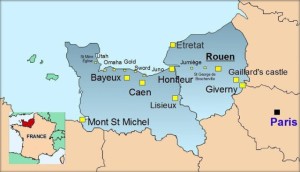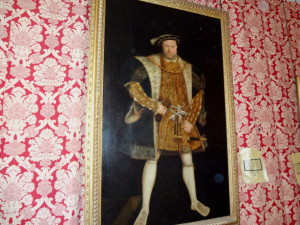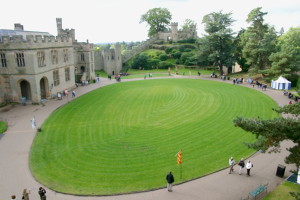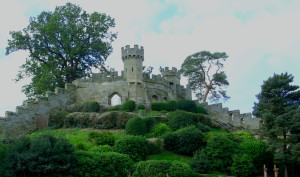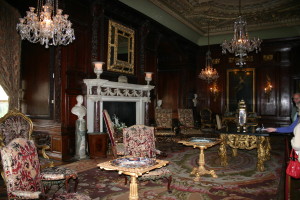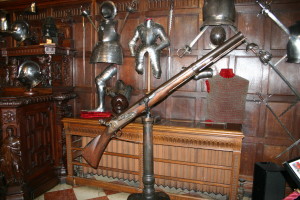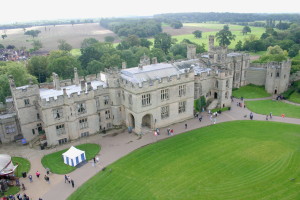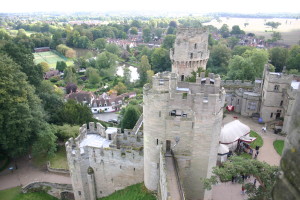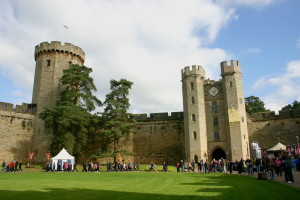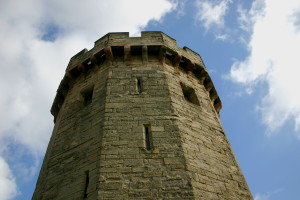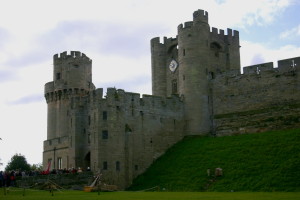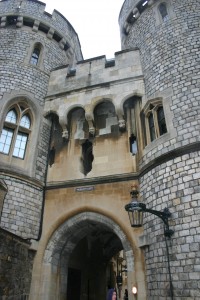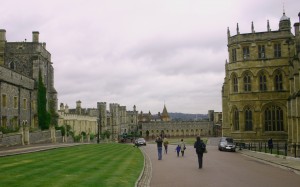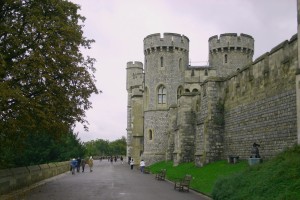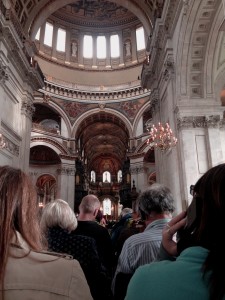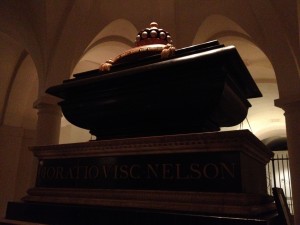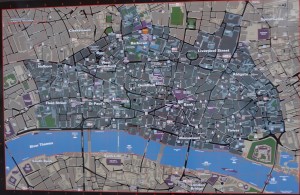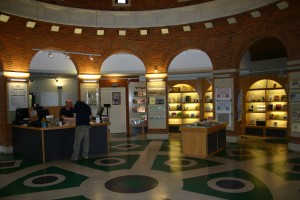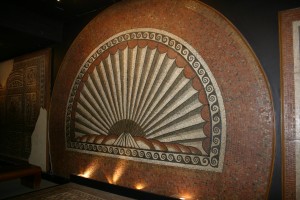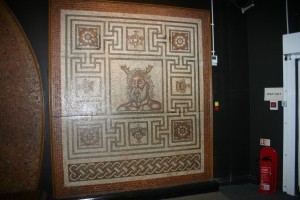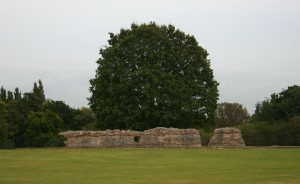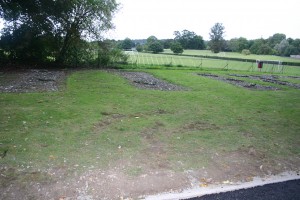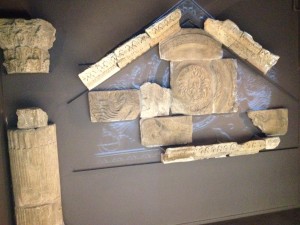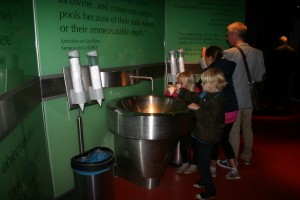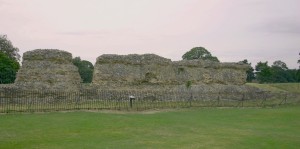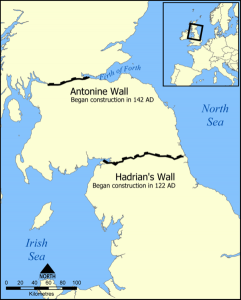London is the number one tourist destination in the world; the heart of western civilization. Some recognize it as the capital of the world. By 1922, “the empire on which the sun never sets” ruled over 22.63% of the globe, 450 million people or roughly 20% of the world’s population. India, Hong Kong, Malaysia, Singapore, Australia, New Zealand, Canada, Egypt, Nigeria, Somalia, Sudan, Kenya, Uganda, Rhodesia, South Africa, Iraq, Palestine, Jordan, part of Antarctica, Ireland, Scotland, Jamaica, The Bahamas, Gibraltar, Malta, Cyprus and many more territories not to mention the thirteen colonies of the United States.
WWII sapped a lot of the economic, political and military life-blood of the British Empire. The long resistance by India to Commonwealth rule culminated in its independence in 1947. The British people and the British army seemed unwilling to back a policy of repression in India, as well as other parts of the Empire. as their own country lay in ruins. The empire began to unravel with many British colonies recognizing their own independence. Today there are 53 independent members of the Commonwealth, 16 of which recognize Queen Elizabeth as Sovereign.
The task of making a “top 10” sites in London, much less the UK, is challenging. I have decided to make a category called “Must See” for the city of London and one for outside London. Most people go to London when visiting the United Kingdom, at least initially. There is enough to visit in London and the surrounding area for a full week. However, some of the best sites for tourists and visitors are outside of the immediate sphere of London.
I lived in England for almost a year and a half and traveled north to south, east to west seeing the entire country plus Scotland. These lists are not all inclusive, and while everyone’s taste is different, I wanted to provide people going to the UK with information they might find helpful in planning a trip.
Must See – London (alphabetical order)
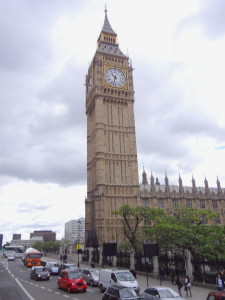
Big Ben is the bell tower, not the clock
1. Big Ben/Thames River/The Eye/Parliament/Marriott (Westminster Bridge)
This isn’t a specific historic site, but a combination of several. If you stand on Westminster Bridge you are within walking distance to Westminster Abbey, Parliament, The London Eye, Big Ben, the Marriott Hotel at London County Hall and standing over the Thames River. No matter what time of the year, there will be people from all over the world walking across the bridge taking pictures and conversing in many languages. If you aren’t staying at the Marriott, at least eat lunch here as it was the former Town Hall of London and one of London’s 5 Star Hotels. You can find out here what Big Ben really is (hint: it isn’t the clock tower).
Link for more: http://myenglishjourney.com/hello-london/
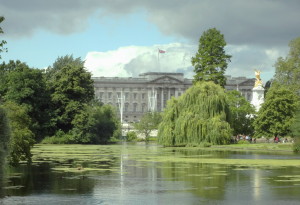
Picture was taken from the park nearby
2. Buckingham Palace
Everyone will want to go and see Queen Elizabeth II as this is one of her official residences (she rotates to different locations throughout the year). The changing of the guards at Buckingham Palace is a must see. All of its daily pageantry and history is on display every day, but get there early if you want a good location to see the guards change. Take a walk while you are waiting around the park in front of the Palace that so many never see. Occasionally, when the Queen is staying at another residence, some state rooms within the Palace are open for the public.
Link for more: http://myenglishjourney.com/hello-london/
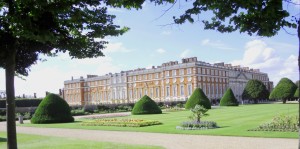
Hampton Court Palace
3. Hampton Court Palace
It is a train ride or a long (and expensive) taxi ride to Hampton Court Palace from central London. It is well worth it. The story of Cardinal Wolsey and King Henry VIII is a good one and it begins here. You can experience the lavishness with which Henry VIII lived. See and hear the sad story of his six wives. There is so much royal history at this site and the architecture is interesting. The private gardens are some of the best I have ever seen and there is a horse drawn carriage that will give you a tour. King William III died in the garden after a fall from his horse.
Link for more: http://myenglishjourney.com/hampton-court-…outside-london/

Queen Victoria in front of Kensington Palace where Princess Diana lived
4. Kensington Palace
Princess Diana lived here. It was also the main residence of Queen Victoria. After restorations are complete, Prince William and Princess Kate will live where the Queen’s sister, Princess Margaret, once lived in the Palace. It is the centerpiece of Hyde Park that was once part of the royal woods that surrounded it. Princess Diana memorial is in Hyde Park as is the playground named for her. There are historical locations like Speaker’s Corner where people still go to publicly protest whatever is on their mind. The Prince Albert Memorial is nearby along with a variety of statues and monuments honoring famous Brits from throughout the centuries.
Link for more: (Coming Soon)
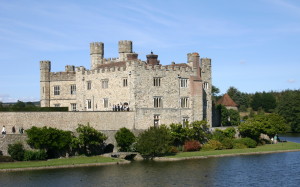
Leeds Castle
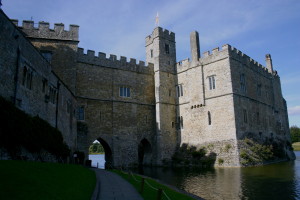
The oldest part of the castle
5. Leeds Castle
It is such a beautiful castle with a unique history that pre-dates the Norman Conquest, yet most of the castle is still furnished as it was in the 20th century when an American heiress entertained famous politicians, actors, authors and artists. This ancient castle and fortress became the place to be seen by the rich and famous in Europe and the U.S. prior to WWII. The surrounding country is beautiful and the castle is well run today. Don’t miss this day trip from London.
This Was Forbidden But I Got A Small Piece Of The Play On Video
Link for more: http://myenglishjourney.com/leeds-castle-outside-london/
6. Shakespeare’s Globe Theatre
You don’t have to appreciate Shakespeare to enjoy the Globe Theatre. It is an experience, not just a production. The theater has been reproduced as closely to the original as possible. It was made for audience participation; the interaction is intimate for a play. There is nothing formal or stuffy about seeing a play at the Globe Theater. Do not miss an opportunity to see a Shakespeare play at this location. The actors are terrific and talented. The production is of the highest quality and usually true to the earliest manuscript. Regardless of what is showing, go and see a play. They offer matinee and evening plays on most days, but you should call ahead to make reservations and get good seats.
Link for more: (Coming soon)
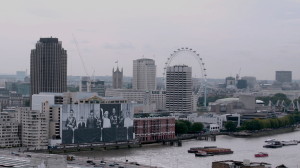
View from the top of St. Paul’s Cathedral
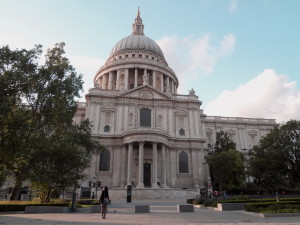
View from the ground of St. Paul’s Cathedral
7. St. Paul’s Cathedral
Known as the nation’s church, St. Paul’s is even more spectacular inside that it is incredible on the outside. It is a huge building with a lot of history, yet modern enough to appeal to the current population as an active cathedral. This location is where Britain’s gathered in mass the day after 911 when there was national mourning for those lost in the attack on New York City. King Hussein of Jordan, a Muslim, had a memorial service here where the Quran was spoken for the first time at a British cathedral. The Royal family uses the church today for important ceremonies and state events. Two important figures in non-Royal British history are buried here; Admiral Lord Nelson and the Duke of Wellington. These are the two heroes of the Napoleonic Wars. This cathedral was work of the famous architect Sir Christopher Wren. It was his masterpiece. It is one of the most spectacular buildings ever designed and built, in my opinion.
Link for more: http://myenglishjourney.com/st-pauls-cathedral/
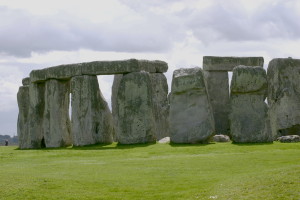
Stonehenge
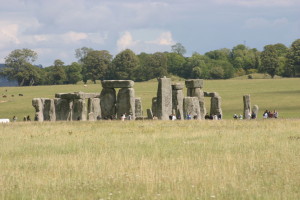
A view from the hilltop nearby
8. Stonehenge
There is something mystical about seeing Stonehenge. When you walk onto the side of the hill where Stonehenge is located, you are surprised how big the rocks are. As you look out over the plain it just begs the question – why? Someone went to a great deal of effort to put these rocks in a specific location, a certain way. The mobile guide is informative, which is not always the case at these historic locations. There is lots of information to absorb and some terrific trails to walk around to see burial mounds and old trails with historic information about how the stones might have arrived at Stonehenge.
Link for more: http://myenglishjourney.com/surprising-stonehenge
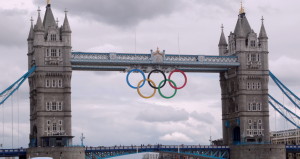
The Tower Bridge During the Olympics

The famous White Tower inside the Tower of London
9. Tower of London
Only Westminster Abbey can rival the Tower of London with regards to British history. It has been a fortress, a castle, a royal residence, a palace, a jail and dungeon, a center of justice, a place of execution, a mint, the location of royal murder, an armory, storage for royal records and the location where the royal jewels are currently stored. It is on the Thames River near the Tower Bridge which provides a beautiful view. There is food and entertainment while the Beefeaters provide free tours and plenty of places to sit and rest while you explore. With the Thames River cruise boat docks right next door, take the tour and then take a cruise ride to Westminster for a relaxing and interesting ride while a guide tells you about the historical sites of London.
Link for more: The Tower of London

Main entrance to Westminster Abbey

A side view of the Gothic architecture
10. Westminster Abbey
Its Gothic architecture is glorious, but the tombs of royalty and the rich history inside the Abbey make the trip worthwhile. It is a solemn place, more tomb than Abbey to the observer. Yet this 1,000 year old building holds more history than any other British historical site. Study the histories and read the interesting stories prior to entering the Abbey for they are too many and too complex for a simple mobile guide tour. It has been the final resting place for royals for centuries. There are monuments and sculptures recognizing the rich and famous; authors, artists, poets, playwrights, musicians, military leaders, religious leaders and others who have played an important role in British history since William the Conqueror.
Link for more: http://myenglishjourney.com/westminster-abbey-london/
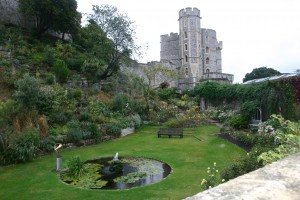
From inside the castle grounds

The Quadrangle where some of the residences are.
11. Windsor Castle
I tried to keep this a Top 10 list, but it is impossible. Windsor Castle is now only one of the homes of the current monarchy, but one of the most spectacular castles in England. It is both palace, castle, hallowed church grounds and the center of a community. The trip through Windsor Castle is well worth it. Many of the former kings of England that called it home re-decorated it and the tour will take you through different sections that have been re-decorated as it looked during a specific period of time. The castle and its grounds are enormous. I was lucky enough to be leaving when Sunday Evensong was beginning in St. George’s chapel where Henry VIII was buried. It was beautiful and memorable. It is a short train or car ride from London.
Listen To The Choir At St. George’s Inside Windsor Castle
Link for more: http://myenglishjourney.com/windsor-castle/
Top Ten 10 Must See – Outside London (alphabetical order and there, in fact, twelve)

Home of the greatest military leader in England
1. Blenheim Palace
Blenheim Palace was an elaborate gift from the nation to John Churchill, distant relative of Winston Churchill. He became the first Duke of Marlborough following his famous victory at the Battle of Blenheim in 1704. The Palace, whose architecture is English Baroque, is a living monument built out of the gratitude of a nation. Churchill’s leadership in the battle was the turning point of the war against the French. His grandson, Winston Churchill, was born in 1874 and raised at Blenheim Palace. Two of the greatest war heroes of Great Britain were related and lived in the same palace some 150 years apart. John Churchill’s wife Sarah, the Duchess of Marlborough, never wanted such a large home and the original architect, Sir John Vanbrugh, eventually quit before it was finished. He saw the palace as a monument to Queen Anne more than a residence of the Duke of Marlborough. The famed British landscaper of the 18th century, Capability Brown, developed the property and gardens. The Duchess even had an argument with Queen Anne, who was previously a close personal friend, over the building of the palace. Funds to build the property ran out in 1712 and the palace was eventually finished by the Duke himself. It is considered one of the most beautiful properties in England. King George III once said, “We have nothing to equal this” referring to its magnificence. Today it is a world heritage site, recognized and protected as one of the world’s greatest cultural and historical sites.
Link for more: (coming soon)
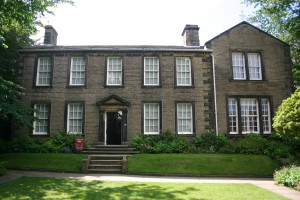
A magical place – the home of the Bronte sisters
2. Bronte Museum
The Bronte sisters’ made the moors of northern England a lonely and brooding place where the cold wind swept through the lives of their characters. The house they lived in and wrote their famous books (Jane Eyre, Wuthering Heights, Agnes Gray) still stands much like it did when it was their home and a parish house for their father, a minister of the church next door. There are great stories here including the sad story of their brother, Branwell. To add to the mystery there is a graveyard in front of the house that remains as it was during their lifetime when so many people died from disease and despair. You are able to walk into the home of these women and actually see the room where they read their stories to one another for advice and support. Northeast of Manchester, it is well worth the trip to the Yorkshire Dales where the Bronte museum is located.
Link for more: http://myenglishjourney.com/bronte-museum-and-parsonage/
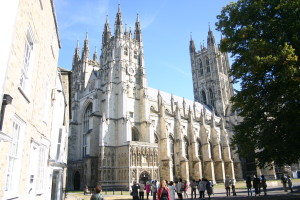
The view as you approach the famous Cathedral
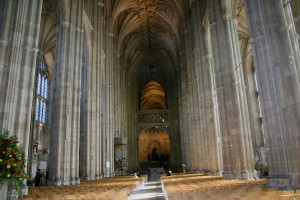
The view from inside Canterbury Cathedral
3. Canterbury Cathedral
One of my favorite classes in college was an entire course on Canterbury Tales written by the famous British author, Geoffrey Chaucer. It is the story of a medieval pilgrimage to the heart of British Christianity, the cathedral in Canterbury. The cathedral is spectacular in its rich history and amazing architecture. The story of the murder of Thomas Becket alone, who became a Catholic saint, is worth the trip. The town of Canterbury was just as entertaining with many homes, shops and sites that remain as they were hundreds of years ago. The town’s people are friendly and open and, combined with its rich history, make it an interesting and great place to visit.
Link for more: http://myenglishjourney.com/canterbury-cathedral-2/
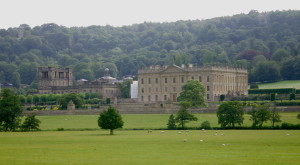
The view driving up to the palace
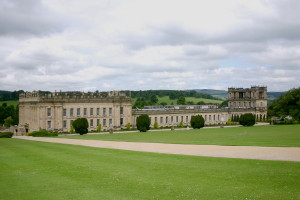
The view from the top of the hill behind the palace
4. Chatsworth
Chatsworth took me by surprise. Other than Windsor Castle, I never experienced a palace so lavishly furnished in such a beautiful setting. The fact that it was never a royal residence makes it even more impressive. Owned and operated today by a charity, the Duke of Devonshire still resides there and the Duke of Wales, Prince Charles, is a frequent visitor in his helicopter. The grounds and gardens alone make this trip worthwhile, but the interior of the palace is breathtaking. Never have I seen such a collection of paintings, sculptures, old furniture, books, tapestries and historical artifacts at any single location. It is located in the beautiful hillside in central England, about an hour and a half drive southeast from Manchester and about a 3 hour drive north from London.
Link for more: http://myenglishjourney.com/chatsworth/
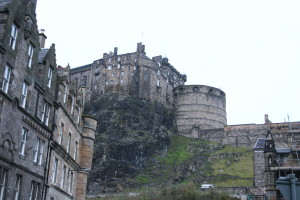
The 1,000 year old castle was built upon a rock
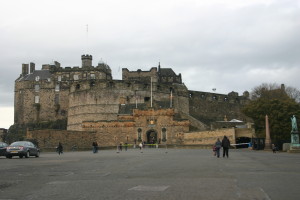
The entrance to the former residence of the King and Queen of Scotland
5. Edinburgh Castle
The city of Edinburgh is built on an extinct volcano over 1,000 years ago with a spectacular view in all four directions. Walk the “royal mile” which is full of shops, medieval churches, ancient buildings and centuries old restaurants built on the road leading directly to Edinburgh Castle. The first reference to “Din Eidyn”, or fortress on the rock, was in 600 AD. The city of Edinburgh, the royal mile and the actual castle itself is easily a day’s worth of exploring. The castle itself was built in the 11th century was a royal residence from 1063 to 1603, the year King James VI of Scotland was crowned King James I of England uniting the two kingdoms for the first time. King James moved his residence to England ending the five plus centuries the castle served as a residence for Scottish royalty.
http://myenglishjourney.com/edinburgh-scotland/
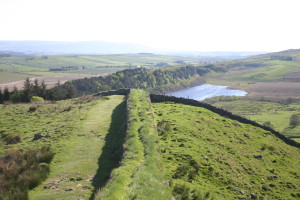
The northern most edge of the Roman empire
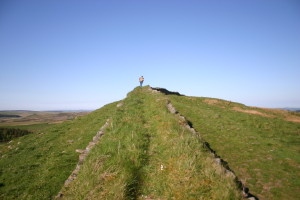
This is one of my favorite places. It is very peaceful and historic.
6. Hadrian’s Wall
I couldn’t get enough of Hadrian’s Wall. It was the northern most frontier and a fading reminder of the glory of the Roman Empire, what is left of this wall today is fantastic. Once 13 feet high and 8 feet wide in some locations, it stretched from one side of the island to the other with forts along the winding wall. Unable or unwilling to fight the crazy nomads of the north (Scotland today), the Romans decided to build a wall to keep them out. Parts of the wall still stand and there are some good archaeological sites where you can walk through the baths and residences of Roman soldiers stationed at the wall. There is even a section where you can walk about a half mile on the wall. Built 2,000 years ago, the crumbling wall still appears as a desolate monument to future global conquerors that nothing earthly is immortal. Sadly, the stones from the wall provided England for centuries for stones to build roads, livestock pens, houses and streets.
Link to more: http://myenglishjourney.com/hadrians-wall-2/
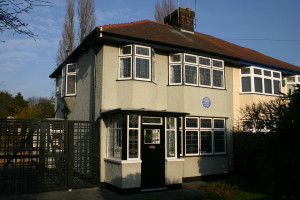
The childhood home of John Lennon
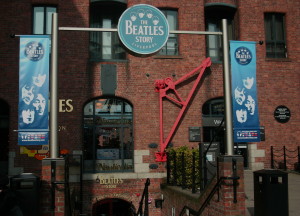
The entrance to the Beatle Museum in Liverpool
7. Liverpool – The Beatles Pilgrimage
Artist Performing At The Cavern Club
West of Manchester on the west coast of England is the home of arguably the greatest band in the rock-n-roll era. Taking a day out of your trip is well worth it for a brief pilgrimage for baby boomers. The museum on the wharf has a great deal of old Beatles memorabilia and is developed in such a way that you progressively go through the life of the Beatles and end up reviewing their solo careers. It ends in a room with John Lennon’s white piano, on which John wrote “Imagine” and a pair of his sun glasses on it while the song plays in the background. You will never believe what Strawberry Fields and Penny Lane look like. Take a tour or drive yourself to see the suburbs where John and Paul lived their teenage years. End your trip in the Cavern – the basement bar where the Beatles became famous in Liverpool. It is a day you won’t forget if you are a Beatles fan.
Link to more: http://myenglishjourney.com/the-beatles-2/
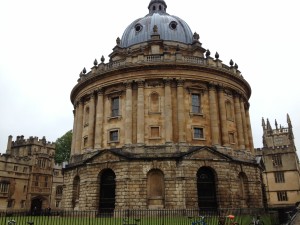
The famous library known as Radcliffe Camera in Oxford
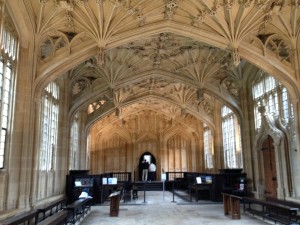
This area was used as the infirmary in the Harry Potter movies
8. Oxford University
There is always energy in college towns and Oxford is no different. Oxford University is the oldest university in the English speaking world. The buildings of Oxford show examples of every type of English architecture since the Saxons (1066). It is known as the “city of dreaming spires” in reference to the towers and steeples at Oxford University. There are 36 different colleges and six Permanent Private Halls at Oxford University, each controlling its own membership with its own internal structure and activities. Some of England’s greatest authors and poets attended or taught at Oxford University including C.S. Lewis and J.R.R. Tolkien. The University has been home to some of the brightest and most influential religious, political and military leaders in English history.
Link to more: (coming soon)
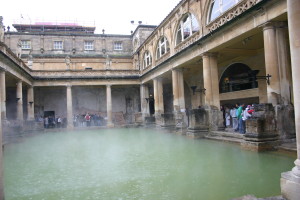
The baths are simply amazing
9. Roman Baths
Another spectacular Roman site are the hot springs near “Bath” referred to as the Roman Baths. The Romans were known for their baths; heating water under rooms and allowing the steam to heat them. However, when the Romans discovered the hot springs in western England, they devoted an entire temple to Silus Minerva, a combination of the local deity prior to the Romans (Silus) and the Roman goddess Minerva. At Bath, you can see ancient Roman artifacts that have been uncovered by archeologists and wishes/curses written on tin and throw into the springs not recovered for 2,000 years. The hot springs have a long history after the Romans left in 410 AD, but to walk through and experience the Roman life and architecture is something you won’t forget. As you leave the Roman Baths visit the Bath Cathedral next door to counterbalance the pagan influence of the pre-Christian Romans.
Link to more:
http://myenglishjourney.com/roman-baths
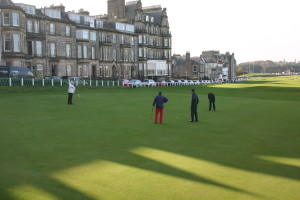
18th hole at St. Andrews
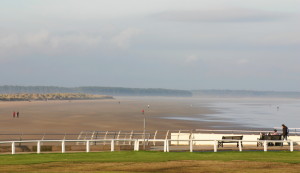
The beach next to St. Andrews golf course where the movie Chariots of Fire was filmed
10. St. Andrews
Perhaps it isn’t fair to put “St. Andrews” as a single site since, like Edinburgh, it is actually several spectacular sites. Built on a beautiful northern Scottish peninsula on the North Sea, St. Andrews is full of history. Within walking distance of each other are St. Andrews Golf Course, the Royal and Ancient Club (governing body of golf since 1754), St. Andrews University, St. Andrews Cathedral, St. Andrews Castle and the incredible beach that served as the backdrop for the movie “Chariots of Fire”. The cathedral and castle are both ruins that are open to the public. Both were destroyed during the Protestant and Catholic conflict of the 1500’s. A church had occupied the site of St. Andrews Cathedral since the 8th century when the relics of St. Andrews were supposedly brought here. The city of St. Andrews is full of old pubs full of history and ancient laughter overlooking the North Sea. Parts of the medieval walls can still be seen. There are plenty of wonderful hotels and bed and breakfasts available for visitors.
http://myenglishjourney.com/st-andrews-cat…ral-and-castle/
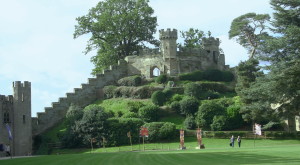
One of best preserved English medieval castles
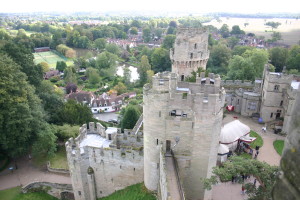
The view from the highest point at Warrick Castle
11. Warwick Castle
There is nothing unusual about historical castles in England, they are everywhere. However, Warwick Castle is a great site because of the experience. Few, if any, castles go to the lengths that Warwick Castle does in providing a medieval experience for the entire family. It is owned and operated by the Tussad’s Group which owns the famous Madame Tussad’s Wax Museum in London. Part of the castle itself dates back to Norman times when William the Conqueror appointed a fellow Norman as owner of the property. There are numerous actors and actresses dressed in medieval costume who are wonderfully prepared to tell you about the dungeons, the history, the Castle owner known as the “Kingmaker”, show you weapons that were used in battle and that provides falcon and bald eagle bird shows. The castle is wonderfully restored and its workers are enthusiastic to provide an entertaining and educational day. Warwick Castle is a great day trip north of London.
Link to more: (coming soon)

View from the wall of the York Minster
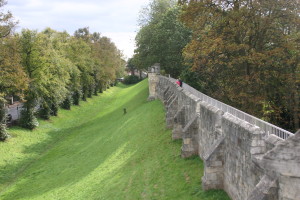
One of the only medieval cities in England whose original walls are still standing
12. York
In reviewing this list, I realize in my desire to keep it as short as possible I left York off the list. Impossible. It has to be on this list. There are plenty of reasons why it needs to go on this list, but if nothing else it is the only city in England that has retained its medieval wall around the city intact. Want to know what a walled city might have looked like in 1400 AD? In addition, York was England’s northern capital, played an important role in the War of the Roses (battle for the throne) and was a key military outpost against the invaders from the north, including the Scots. It also retains one of the oldest markets in Europe and I was told that part of Harry Potter was filmed in this area. The Vikings first sailed up the river from the ocean and entered the UK through York. There are so many old buildings, churches, museums, street vendors, pubs and other great places to visit in York, but I am afraid it is often missed because of its northern location. It is truly one of the great places to visit, but you will need at least 2 full days to even glimpse all of its history.
Link to more: (coming soon)
